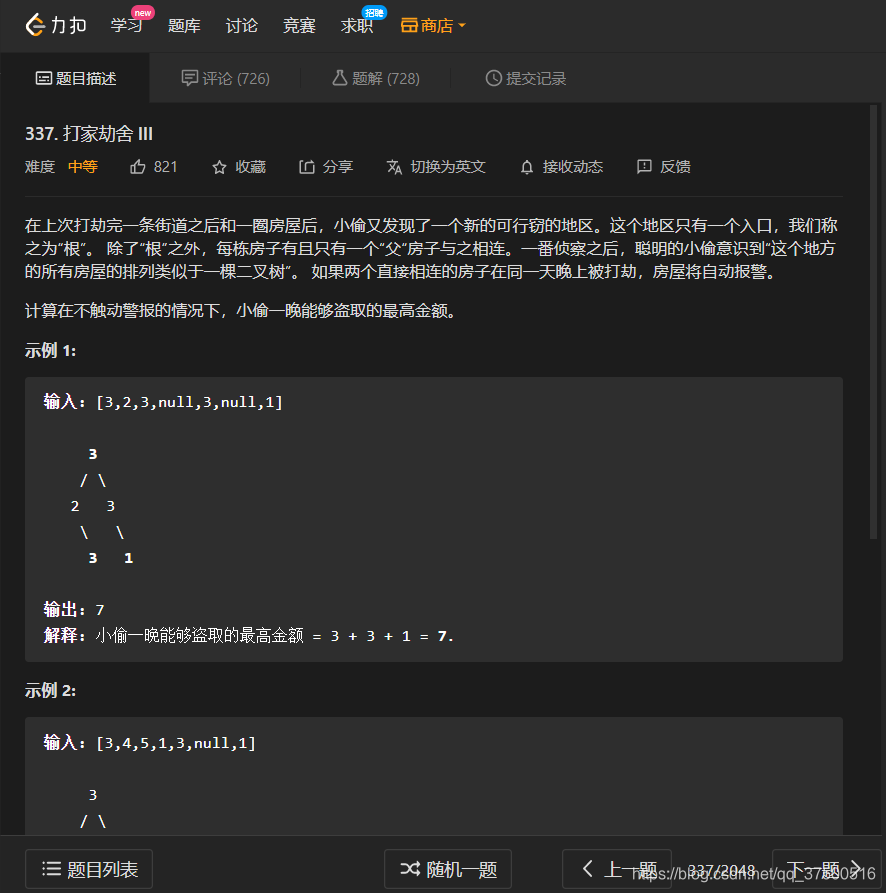Leetcode 337. 打家劫舍 III(DAY 88) ---- Leetcode Hot 100
本文共 1034 字,大约阅读时间需要 3 分钟。
原题题目

代码实现(首刷自解 之前没做明白 说明3个月的提升aaa)
/** * Definition for a binary tree node. * struct TreeNode { * int val; * TreeNode *left; * TreeNode *right; * TreeNode() : val(0), left(nullptr), right(nullptr) {} * TreeNode(int x) : val(x), left(nullptr), right(nullptr) {} * TreeNode(int x, TreeNode *left, TreeNode *right) : val(x), left(left), right(right) {} * }; */class Solution { public: unordered_map m; int rob(TreeNode* root) { if(!root) return 0; if(!root) return 0; int l = rob(root->left); int r = rob(root->right); int ll = 0,lr = 0,rl = 0,rr = 0; if(root->left) { ll = m[root->left->left]; lr = m[root->left->right]; } if(root->right) { rl = m[root->right->left]; rr = m[root->right->right]; } if(l + r >= ll + lr + rl + rr + root->val) m[root] = l + r; else m[root] = ll + lr + rl + rr + root->val; return m[root]; }}; 转载地址:http://fcni.baihongyu.com/
你可能感兴趣的文章
Net与Flex入门
查看>>
net包之IPConn
查看>>
net发布的dll方法和类显示注释信息(字段说明信息)[图解]
查看>>
Net操作配置文件(Web.config|App.config)通用类
查看>>
NeurIPS(神经信息处理系统大会)-ChatGPT4o作答
查看>>
neuroph轻量级神经网络框架
查看>>
Neutron系列 : Neutron OVS OpenFlow 流表 和 L2 Population(7)
查看>>
NEW DATE()之参数传递
查看>>
New Relic——手机应用app开发达人的福利立即就到啦!
查看>>
new 一个button 然后dispose,最后这个button是null吗???
查看>>
next项目部署到服务器pm2进程守护
查看>>
nexus上传jar
查看>>
Nexus指南中的更新强调集成和透明度的重要性
查看>>
Nexus指南已经发布
查看>>
NFinal学习笔记 02—NFinalBuild
查看>>
NFS
查看>>
NFS Server及Client配置与挂载详解
查看>>
NFS 服务配置篇
查看>>
NFS共享文件系统搭建
查看>>
nfs复习
查看>>